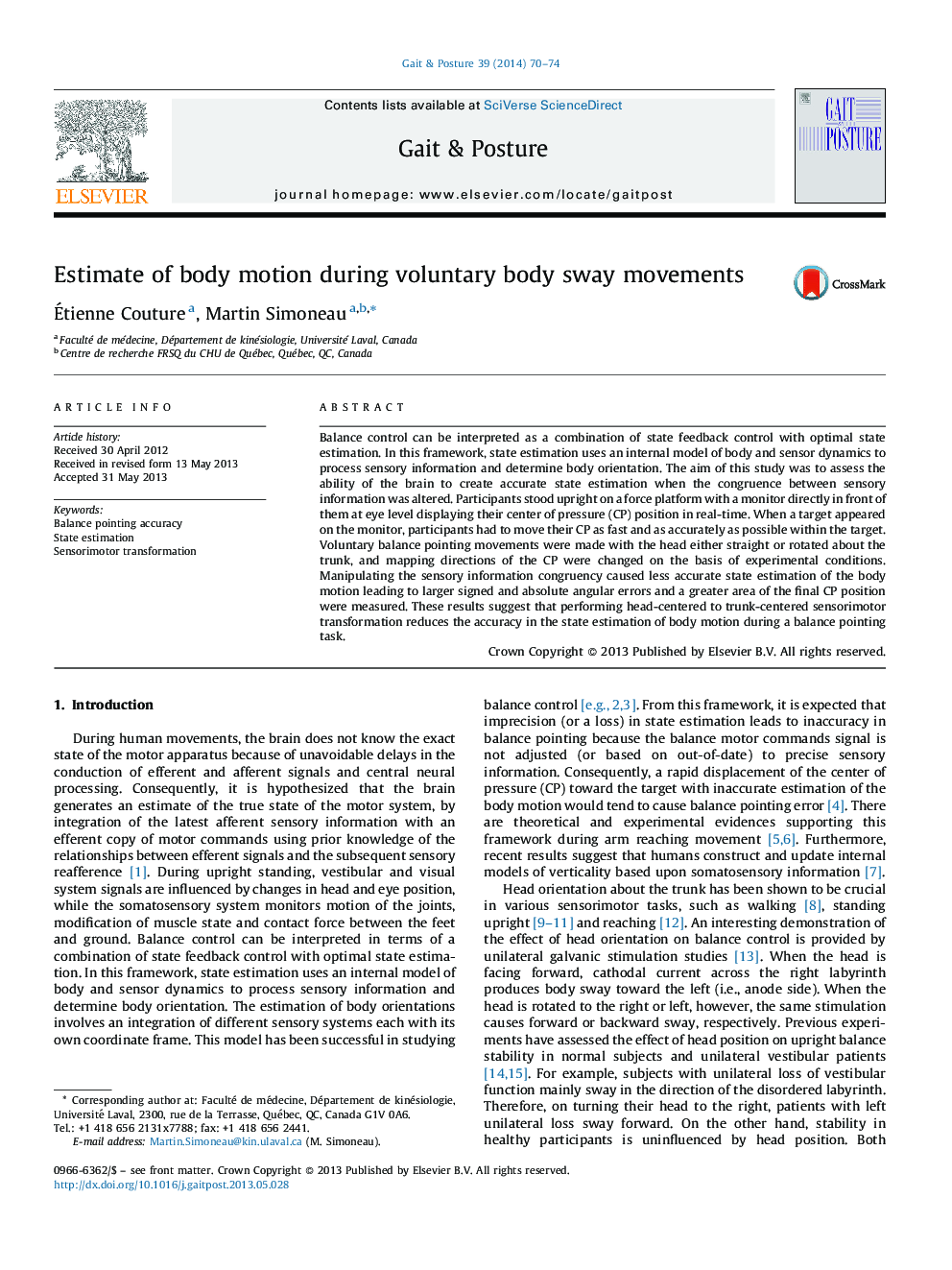| Article ID | Journal | Published Year | Pages | File Type |
|---|---|---|---|---|
| 6206902 | Gait & Posture | 2014 | 5 Pages |
â¢Balance pointing accuracy was assessed during different challenging sensory conditions.â¢Lack of congruence between sensory information reduced state estimation accuracy.â¢Inaccuracy in state estimation was evidenced by larger pointing errors.
Balance control can be interpreted as a combination of state feedback control with optimal state estimation. In this framework, state estimation uses an internal model of body and sensor dynamics to process sensory information and determine body orientation. The aim of this study was to assess the ability of the brain to create accurate state estimation when the congruence between sensory information was altered. Participants stood upright on a force platform with a monitor directly in front of them at eye level displaying their center of pressure (CP) position in real-time. When a target appeared on the monitor, participants had to move their CP as fast and as accurately as possible within the target. Voluntary balance pointing movements were made with the head either straight or rotated about the trunk, and mapping directions of the CP were changed on the basis of experimental conditions. Manipulating the sensory information congruency caused less accurate state estimation of the body motion leading to larger signed and absolute angular errors and a greater area of the final CP position were measured. These results suggest that performing head-centered to trunk-centered sensorimotor transformation reduces the accuracy in the state estimation of body motion during a balance pointing task.
